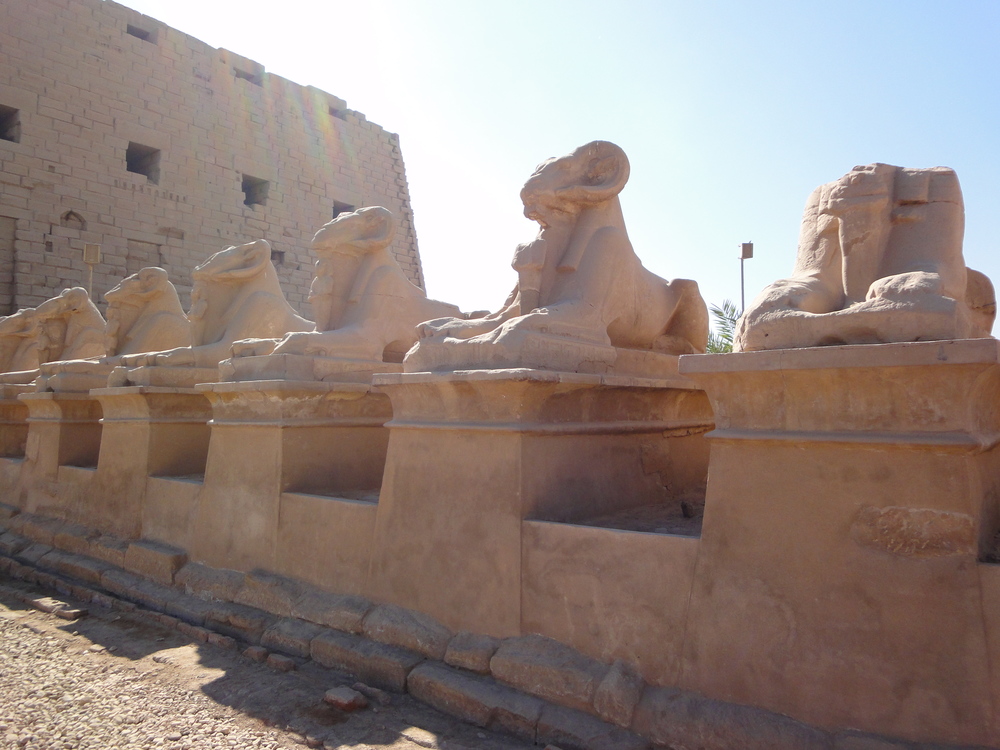
The rhythmic hum of our train rolling along the tracks lightly shakes me from my shallow sleep. Ten hours earlier we boarded our train in busy Cairo. Now, in its early morning hours we’re rolling through the outskirts of Luxor.
As the sun rouses dozing train passengers around us, farmers are tending to their lush fields trackside. A rustic cart is being pulled lazily by a donkey on a dusty side road in the rapidly rising heat. The train grinds to a shuddering halt and we grab our belongings then bolt from the train before it rolls off again through the desert.
Luxor’s train station is cocooned by musty air. Passengers are darting in every chaotic direction possible. Passengers are loaded with overflowing suitcases and tired bags of fruit and homewares. After lugging our bags up three flights of stairs, shoulder-to-shoulder with other erratic passengers, we are spat out of an airtight pedestrian tunnel to board our bus.
We barge through the streets of Luxor at speed while traffic around us darts in and out of lanes with horns blaring uncontrollably. We eventually cascade into the lobby of our hotel, take a couple of minutes to freshen up and race down the front steps to become re-acquainted with the footpath. What greets us is a sturdy convoy of horse-drawn carriages, each carriage mounted by a local Egyptian man wearing a traditional gallibaya (or long shirt) and crooked grin. Our horseman dismounts his carriage in one quick effervescent jump then summons me by the arm to board his pride and joy.
With a thrust of his whip and a bellowing “yallah” in his croaky voice, our host whisks us along at a leisurely, cantering pace. It’s a confusing sight – us propped up in horse-drawn carriages taking in the sights of a more urbanised world. There are ruins of Luxor Temple to the side while the busy traffic makes the peak-hour commute to repetitive jobs in dreary office buildings. Within minutes after straddling along a melting road we unload ourselves to pace the Avenue of the Sphinxes.
Bitter sandy blocks below our feet submit to the weight of our heavy boots while eroding mini-sphinxes form a saluting line on either side of us. Some are crowned with purposely carved ram’s heads while some remain anonymous, beheaded by centuries of erosion and, possibly, opportunistic tomb robbers. We have been summoned to the depths of Luxor’s true jewel – Karnak Temple – by our guide Taha who affectionately refers to us as “royals”.
Even though it’s one of Egypt’s most historical and visited sites, it’s seeped in an inviting presence, hypnotising us to wander every crevice and corner. The site is a mix of decaying temples riddled with age, most impressionable being the authoritative Hypostyle Hall in the Precinct of Amun Re – an expanse of towering columns tattooed by weathered hieroglyphs. We pace around these corridors of sky-scraping pillars as a light breeze caresses our cheeks.
We look up to the open-air ceiling to witness unspoilt paintwork on the underside of a cross-beam. Catouches depict past rulers, ducks and a key of life are etched in gold, red and blue brushstrokes. What peeks out from behind one rotund pillar is an over-towering red granite obelisk, shooting into the blue sky and shadowing Karnak’s Precinct of Mut, immortalising the female pharaoh Hatshepsut.
Karnak is a museum of royal philosophy, curated by many of Egypt’s famous pharaohs who have each added their structural legacies to the temple. Karnak is an effigy for ancient Egyptian opulence, its complex history making you feel you are pacing its hallways in its present. Ancient Egypt’s pharaohs are now long gone yet Karnak’s beauty is ageless.

